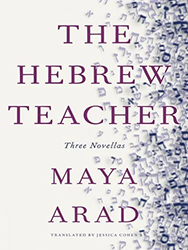Poetry. Jewish Studies. Women’s Studies. Set just before the collapse of the Berlin Wall, HOW TO LOVE THE WORLD is at once a condemnation of the world, a daydream of America, and an unsent love letter — written and rewritten over the course of ten years — to a dead family. A meditation on intergenerational trauma, resilience, and hope, HOW TO LOVE THE WORLD is written in the tradition of epic poetry and follows the author as she retraces her mother’s journey to New York City in the summer of ’89. A Jewish-Uyghur refugee, the author is born along the way, marking the unclear boundary when the memory of a family becomes historical memory, loss the condition of a new beginning. HOW TO LOVE THE WORLD casts refugee women and daughters as the rightful judges of the world and the world as the rightful home of all human beings.

How to Love the World
Discussion Questions
In How to Love the World, Jewish Uyghur refuge Elvira Basevich orients herself in a world where “a Jews looks at an Arab/and see herself,” where “The part of me that’s a Jewish poet/is lost in a parking lot in Detroit,” where her father — once a Professor of Mathematics at Moscow State University — now drives a taxi in New York and curses customers who dare to hail his cab as he works out theorems at red lights. Basevich begins with her own mid-migration birth in Vienna and then hurries the reader across borders, disciplines, and languages until we’re breathless — not just from the difficult journey, but also from the urgent delight of Basevich’s humor and maximalism. Whether relating to Lebanese refuges or Immanuel Kant, Basevichinsists that “the writing of poetry is a kind of time travel; and it is always a preparation for love.”

Help support the Jewish Book Council.



